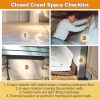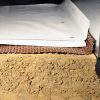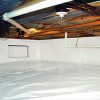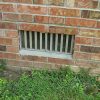Common Questions Readers Ask About Home Energy
These are some common questions we’ve received over the years from readers. We thought we’d pull them together and provide answers in one place.
Fiberglass Insulation
Q. Some fiberglass insulation is yellow, while other fiberglass batts are white or pink. What’s the difference?
A. Manufacturers use different colors to “brand” their version of fiberglass batt insulation. Owens-Corning has trademarked its pink-tinted fiberglass. John Mansville produces fiberglass insulation that’s white and green. Yellow is another common color. The color is provided by the resin-based binder that helps to hold the spun glass fibers together. Thermally, the differently colored batts perform the same, offering an R-value of about 3.14 per inch of thickness. If you see a batt with black stains, this is usually a sign of air leakage near the stained area. One shortcoming of fiberglass insulation is that it doesn’t stop air movement that can contribute to energy losses. Instead, the glass fibers act as a filter, trapping the dust that causes the black stain.
Q. I can tell the walls of my house aren’t well insulated; they’re always cold in winter. How can I cut down on the heat loss?
A. Many houses have this problem. The fiberglass batt insulation used in wood-frame walls can’t stop energy losses due to air leakage through the wall assembly. Even when perfectly installed, the batts don’t provide much insulation value. One option for upgrading wall insulation that’s gaining popularity is the installation of injection foam. The Air Krete® injection foam available from Dr. Energy Saver is usually installed through small holes drilled in the exterior siding or sheathing. The holes are plugged after installation. Thanks to its shaving-cream consistency, this foam can flow around existing underperforming fiberglass insulation, completely filling and sealing each stud cavity. Air-Krete’s higher R-value (nearly R-4 per in.) combined with its air-sealing ability will make any exterior wall much more energy efficient.
Q. A neighbor who lives in a house very similar to our house has lower electric and fuel bills. I can’t tell why I’m paying more than he is. What can I do to find out?
A. The best way to find out why your house has higher energy costs is to have an energy audit done. But be aware that some energy audits –also known as energy assessments—are not as thorough as others. In many parts of the country, free or subsidized energy audits are available. Before signing up for one of these, make sure that the technician conducting the audit is certified by the Building Performance Institute (BPI), and that a blower door test will be performed as part of the audit. Confirm that the audit will include an assessment of HVAC equipment efficiency and insulation levels throughout the house. A true whole-house energy audit should identify specific upgrades that are recommended to improve energy efficiency and cut your electric and fuel bills.
Q. Our house has forced-air heating and AC, with two zones. We replaced our old thermostats with programmable models to save energy, but we haven’t seen any significant savings this winter. What are we doing wrong?
A. Research has shown that programmable thermostats can cut your heating and cooling costs, but only when used correctly. Try programming your thermostats to set back automatically to around 60°F when you’re sleeping (between 11pm and 6am), and 68°F when family members are up and about. If your thermostats allow separate weekend settings and you sleep late on weekends, extend the 60° time period accordingly.
Q. We live in an older house that isn’t well insulated. The furnace is old, too. Which problem do we deal with first?
A. It’s usually better NOT to replace the furnace before upgrading insulation levels. Recommended insulation levels for different parts of the house can be found at the ENERGY STAR® website. If you are able to upgrade your home’s insulation according to these recommendations, there’s a good chance that you’ll be able to replace your old furnace with a smaller unit, since your HVAC system won’t have to work as hard to maintain comfortable indoor temperatures.






